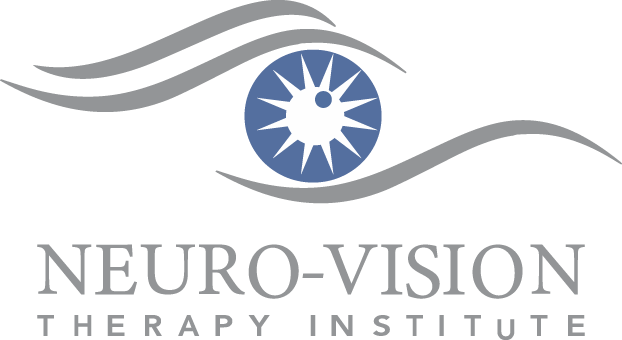Concussions are the most common brain injury, often producing a diffuse brain injury that impacts the entire brain with inflammation and swelling. The majority of concussions do not result in a loss of consciousness, and even a mild concussion can produce severe symptoms.
Proper diagnosis and treatment immediately following and monitoring at regular intervals is key to preventing persistent post-concussion issues. Vision issues occur in up to 90% of individuals following a concussion, a Neuro-Vision Evaluation will identify post concussion vision syndrome, which is best treated early on following the injury.
Studies have shown that 33% of patients have persistent post-concussion symptoms for greater than 6 months and 15% of patients complain of problems greater than 12 months after injury. Early detection of post concussion syndrome is critical for the initiation of proper care to help speed up recovery.
What is post-concussion syndrome?
Post-concussion syndrome (PCS) occurs when concussion symptoms persist for months and even years after the head trauma or injury. Individuals who have sustained multiple concussions and/or subconcussive events, such as repetitive head impacts like heading the ball in soccer, are at an increased risk of developing PCS. Direct impacts to the head can lead to PCS, as well as indirect injuries like whiplash. Common symptoms of PCS include headaches, brain fog, fatigue, sleep problems, memory issues, vision problems, dizziness, or more. More specifically, vision issues occur in up to 90% of individuals following a concussion. This is called post-concussion vision syndrome. The earlier the treatment the sooner these vision issues can be resolved. It is our goal to help individuals recover their vision and begin to feel better as soon as possible.
What are symptoms of post concussion vision syndrome?
- Difficulty reading or performing near work for extended periods
- Unable to view screens or computers
- Blurred vision at distance or near
- Difficulty looking from near to far/far to near
- Double vision
- Light sensitivity
- Headaches
- Eyestrain
- Fatigue
- Difficulty with movement and/or crowded environments
- Avoidance of reading and near work
- Easily distracted while reading
- Balance dysfunction
- Feeling foggy or off
If you or a loved one experience any of the above symptoms, a Neuro-Vision Evaluation conducted by a Neuro Optometrist is the only means of getting a clear and accurate diagnosis. If you’re interested in better understanding the seriousness and severity of the symptoms you or a loved one are experiencing, we encourage you to take our Vision Symptom Quiz.
What causes post concussion vision syndrome?
Visual pathways of the brain are susceptible to concussive injury. These pathways are responsible for maintaining clear, comfortable, binocular vision throughout the day, and disruption in these pathways can lead to reduced performance and severe symptoms in daily activities.
How is post concussion vision syndrome treated?
Vision rehabilitation is the best treatment for post-concussion vision issues. Vision rehabilitation is a type of post concussion treatment that addresses the root of vision problems by addressing disruptions in the visual brain pathways. Through advanced vision techniques, repetition, and learning, these visual pathways can recover, become faster and more accurate, allowing for vision to support activities rather than disrupt them.
In addition to utilizing the active post concussion vision therapy techniques in vision rehabilitation, our doctors incorporate syntonics (or color light therapy), meditation practice, and breath work to help calm the ups and downs that many people with post-concussion vision syndrome experience. We have found this approach also helps to integrate newly-learned visual skills more quickly.
Concussion treatment often also includes special lens prescriptions, lifestyle recommendations, proper nutrition and supplementation, and other therapeutic programs that support comprehensive concussion recovery.
References
Ventura RE, Balcer LJ, Galetta SL. The neuro-ophthalmology of head trauma. Lancet Neurol. 2014;13(10):1006-1016. doi:10.1016/S1474-4422(14)70111-5.
Thiagarajan P, Ciuffreda KJ. Effect of oculomotor rehabilitation on accommodative responsivity in mild traumatic brain injury. J Rehabil Res Dev. 2014;51(2):175-191. doi:10.1682/JRRD.2013.01.0027.
Thiagarajan P, Ciuffreda KJ, Capo-Aponte JE, Ludlam DP, Kapoor N. Oculomotor neurorehabilitation for reading in mild traumatic brain injury (mTBI): An integrative approach. NeuroRehabilitation. 2014;34(1):129-146. doi:10.3233/NRE-131025.
Master CL, Scheiman M, Gallaway M, et al. Vision Diagnoses Are Common After Concussion in Adolescents. Clinical Pediatrics 2015;1-8.
Maroon, JC, Bost, J., Concussion Management at the NFL, College, High School, and Youth Sports Levels. Neurosurgery 2011;58(1):51–56.
Groce A, Bansal S. Optometric Management of Sports-related Post-concussion Visual Symptoms in Teenagers with Vision Therapy: A Case Series. Vision Development & Rehabilitation 2016;2(1):34-53.
Ciuffreda KJ, Kapoor N. Vision Disturbances Following Traumatic Brain Injury. Current Treatment Options in Neurology 2002;4:271-80.
Zasler ND, Katz DI, Zafonte. Brain injury medicine: principles and practice. Demos; NY; 2006.
Weiss LM. Visual-Vestibular Interaction in the Acquired Brain Injured Patient. J Optom Vis Devel 2002;33:33-41.
Suter p, Harvey l. (eds). Vision Rehabilitation: Multidisciplinary Care of the Patient Following Brain Injury. CRC Press:2011
Proctor A. Traumatic brain injury and binasal occlusion. OptVis Dev 2009;40(1):45-50.
Maino D. Neuroplasticity: Teaching an old brain new tricks. Rev Optom, 2009; 46(1):62-64,66-70.
Lachapelle, J., Bolduc-Teasdale, J., Ptito, A., McKerral, M., Deficits in complex visual information processing after mild TBI: electrophysiological markers and vocational outcome prognosis. Brain Inj 2008;22:265.

